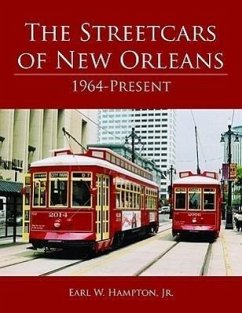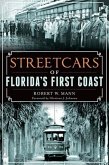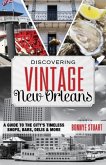In 1964, New Orleans began removing its Canal Street streetcars to make way for the "more progressive" buses. In 1988, the Riverfront streetcars began rolling, and in 2004 streetcars made a triumphant return to Canal Street. This concise history, complete with numerous photographs, traces developments in New Orleans streetcar transportation since 1964 and includes chapters on collectibles and the damage from Hurricane Katrina.
"Earl W. Hampton, Jr., is more than a streetcar fan or buff. A streetcar 'scientist' might be more exact." -Louis C. Hennick, coauthor, The Streetcars of New Orleans "His book clearly illustrates his love and passion for the New Orleans streetcars. The book begins where Louis C. Hennick's book The Streetcars of New Orleans ends. . . . He tells us the history of the lines with technical information and personal stories, and he has included wonderful pictures, which bring the historic New Orleans streetcars alive." -Elmer von Dullen, retired superintendent, Carrollton Shop, Maintenance Dept. & New Car Construction "By far the most accurate and detailed history of New Orleans streetcars." -Otto Goessl, retired streetcar photographer With a vibrantly painted exterior and bells alerting eager passengers of its arrival, the New Orleans streetcar is more than a method of transportation; it is a symbol of the city's past moving forward into a bright future. This pictorial history documents the legacy of this icon, covering events that took place between 1964 and 2008. It recalls the day the streetcars were removed in favor of buses, the rejoicing heard around the city when they returned, and the years of restoration after weathering an infamous storm-Katrina. Technical information, explanations regarding the engineering of these intricate machines, nostalgic pictures, and personal anecdotes are peppered throughout each chapter. How the streetcar has become part of American culture, appearing in the famous movie A Streetcar Named Desire and frequently as souvenirs and memorabilia, is also depicted. A keepsake itself, this attractive book covers every aspect of the streetcar and will make a wonderful addition to the collection of aficionados or fans of New Orleans. Earl W. Hampton, Jr., is an intermodal service representative of CSX Transportation, a railroad service that distributes resources across the eastern United States. In addition to contributing articles to Traction & Models, he was the editor in chief of Open Track, the former publication of the New Orleans Railway Museum, Inc., which is now the New Orleans Chapter of the National Railway Historical Society. Hampton, a native of New Orleans, is actively involved with the New Orleans Street Railway Association, a nonprofit organization whose mission is to work with the New Orleans Regional Transit Authority to promote the preservation of the city's historic streetcars.
"Earl W. Hampton, Jr., is more than a streetcar fan or buff. A streetcar 'scientist' might be more exact." -Louis C. Hennick, coauthor, The Streetcars of New Orleans "His book clearly illustrates his love and passion for the New Orleans streetcars. The book begins where Louis C. Hennick's book The Streetcars of New Orleans ends. . . . He tells us the history of the lines with technical information and personal stories, and he has included wonderful pictures, which bring the historic New Orleans streetcars alive." -Elmer von Dullen, retired superintendent, Carrollton Shop, Maintenance Dept. & New Car Construction "By far the most accurate and detailed history of New Orleans streetcars." -Otto Goessl, retired streetcar photographer With a vibrantly painted exterior and bells alerting eager passengers of its arrival, the New Orleans streetcar is more than a method of transportation; it is a symbol of the city's past moving forward into a bright future. This pictorial history documents the legacy of this icon, covering events that took place between 1964 and 2008. It recalls the day the streetcars were removed in favor of buses, the rejoicing heard around the city when they returned, and the years of restoration after weathering an infamous storm-Katrina. Technical information, explanations regarding the engineering of these intricate machines, nostalgic pictures, and personal anecdotes are peppered throughout each chapter. How the streetcar has become part of American culture, appearing in the famous movie A Streetcar Named Desire and frequently as souvenirs and memorabilia, is also depicted. A keepsake itself, this attractive book covers every aspect of the streetcar and will make a wonderful addition to the collection of aficionados or fans of New Orleans. Earl W. Hampton, Jr., is an intermodal service representative of CSX Transportation, a railroad service that distributes resources across the eastern United States. In addition to contributing articles to Traction & Models, he was the editor in chief of Open Track, the former publication of the New Orleans Railway Museum, Inc., which is now the New Orleans Chapter of the National Railway Historical Society. Hampton, a native of New Orleans, is actively involved with the New Orleans Street Railway Association, a nonprofit organization whose mission is to work with the New Orleans Regional Transit Authority to promote the preservation of the city's historic streetcars.







